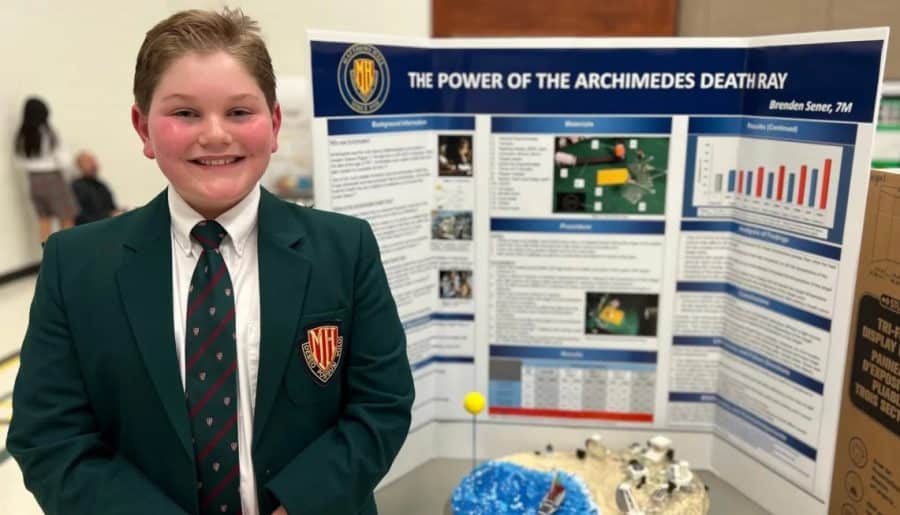Archimedes was a well-known scientist and mathematician who made important inventions and scientific contributions. Among them was the “Death Ray,” sometimes called the heat ray, a powerful device that could use the sun’s power through mirrors to destroy enemy ships.
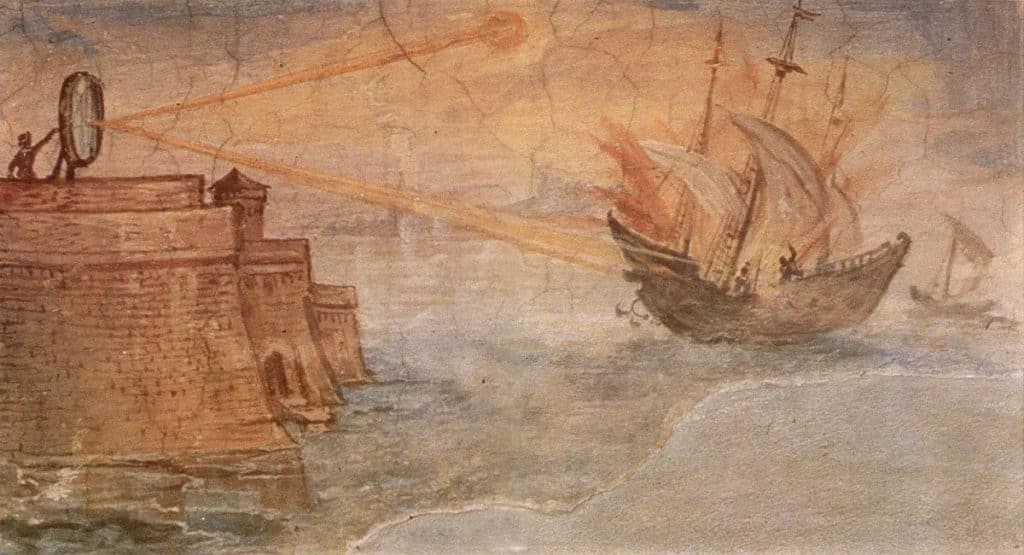
It’s believed that Archimedes used this invention to burn Roman ships during the Siege of Syracuse more than 2000 years ago.
For hundreds of years, scientists have tried to understand and create how the death ray works, though they have failed. However, that might not be the case now.
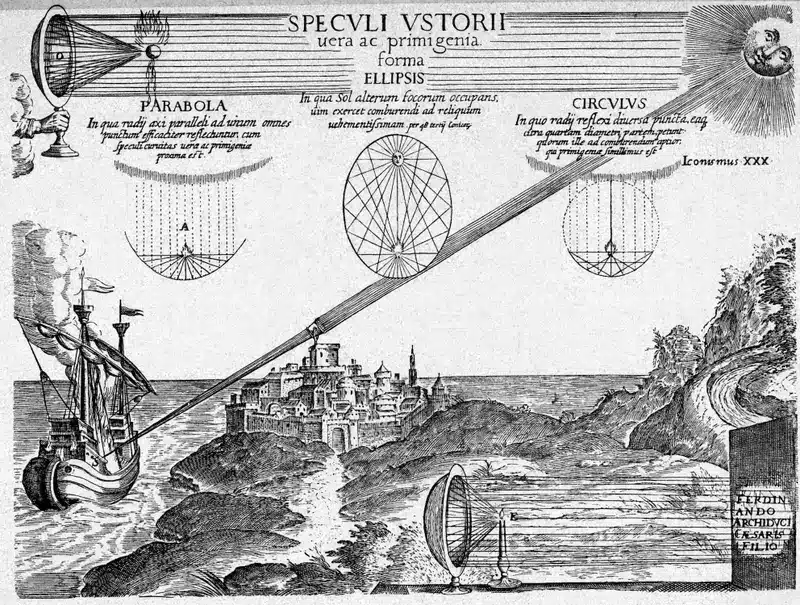
Image Credit: Bettmann via Getty Images
Would you believe me if I told you that a 13-year-old student has created a smaller version of a death ray?
Yes. You read that right!
Brenden Sener, a student of London, Ontario, created a science project to test if it was possible to replicate the death ray’s power on a smaller scale.
For his project at the 2023 Matthews Hall Annual Science Fair, Brenden used heat lamps as a substitute for the sun to try and produce the same effects as Archimedes’ death ray. He also used small concave mirrors to reflect light onto a marked cardboard target.
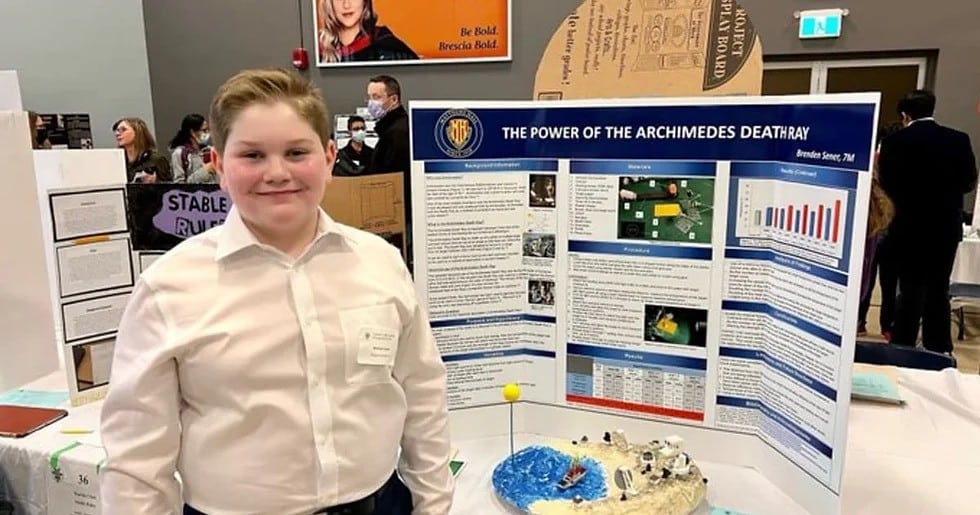
He hypothesized that as the mirrors focused light energy onto the cardboard, the temperature of the target would increase with each mirror added.
For the experiment, Brenden used two different light bulbs, one of 50 watts and the other of 100 watts. He measured the temperature increase with each additional mirror using an infrared thermometer.
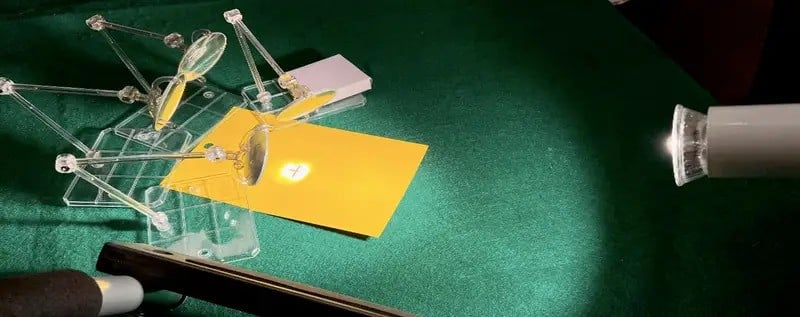
Image Credit: Brenden Sener
Before adding mirrors, the cardboard’s temperature was about 81°F with just the heating lamp and 100-watt bulb. But after adding one mirror and letting the cardboard cool, he found that the focal point’s temperature increased to almost 95°F. The temperature increased even more when the fourth mirror was added, with the focal point’s temperature rising by about 18°F to 128°F.
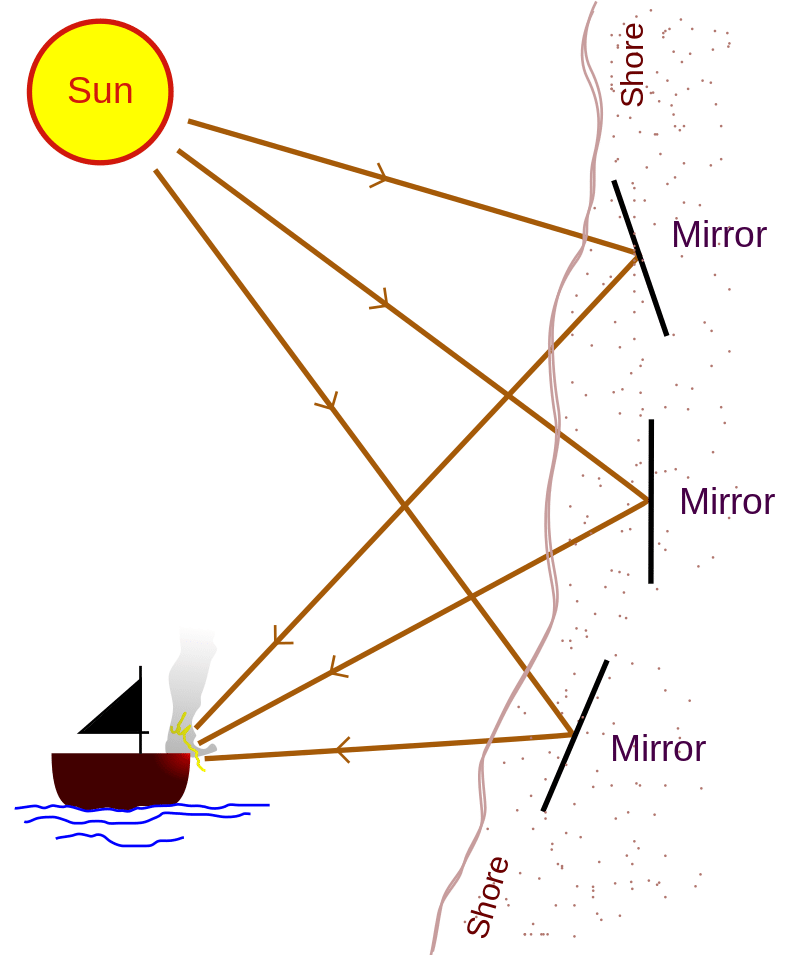
Brenden found these results remarkable, suggesting that light travels in all directions, and the concave mirror’s shape focuses the light onto a single point. Brenden believes Archimedes’ death ray could be replicated using a strong heat source and scaling up the experiment.
There is still debate about the historical accuracy of the “heat ray” being used to attack ships, and limited evidence of Archimedes being the actual inventor. Some experiments have shown it is possible, but the mirrors would need to hold very steady for up to 10 minutes to start a fire. In an actual battle, the boats would be moving a lot in the ocean, so it may not be very practical.
How It All Started
Brenden developed an interest in the famous mathematician when he saw the Archimedes screw in a documentary. As a part of his science project in 2022, Brenden built a device called the Archimedes screw that can raise and move water.
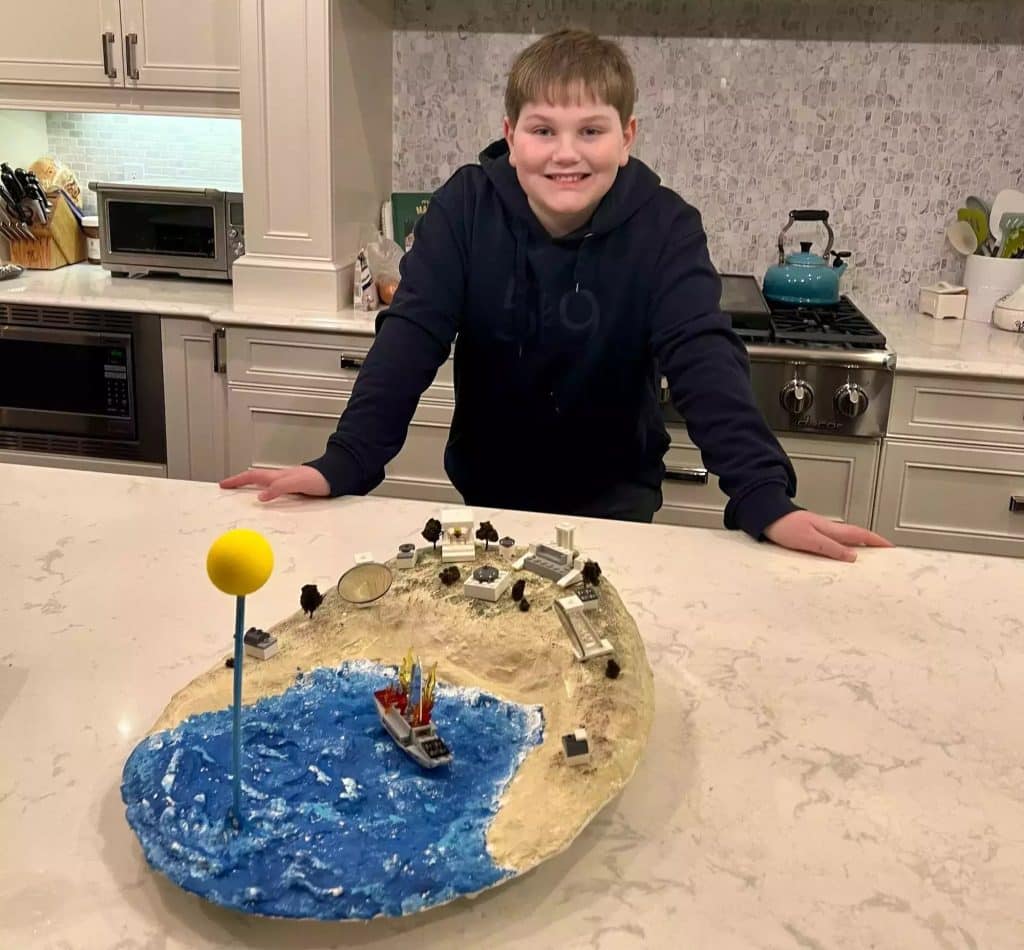
“Archimedes was so ahead of his time with his inventions. And it really did revolutionize technology at that time because Archimedes was thinking about stuff that no one actually had before,” Sener said. “(The death ray) is such a neat idea that no one at that time would have thought of.”
